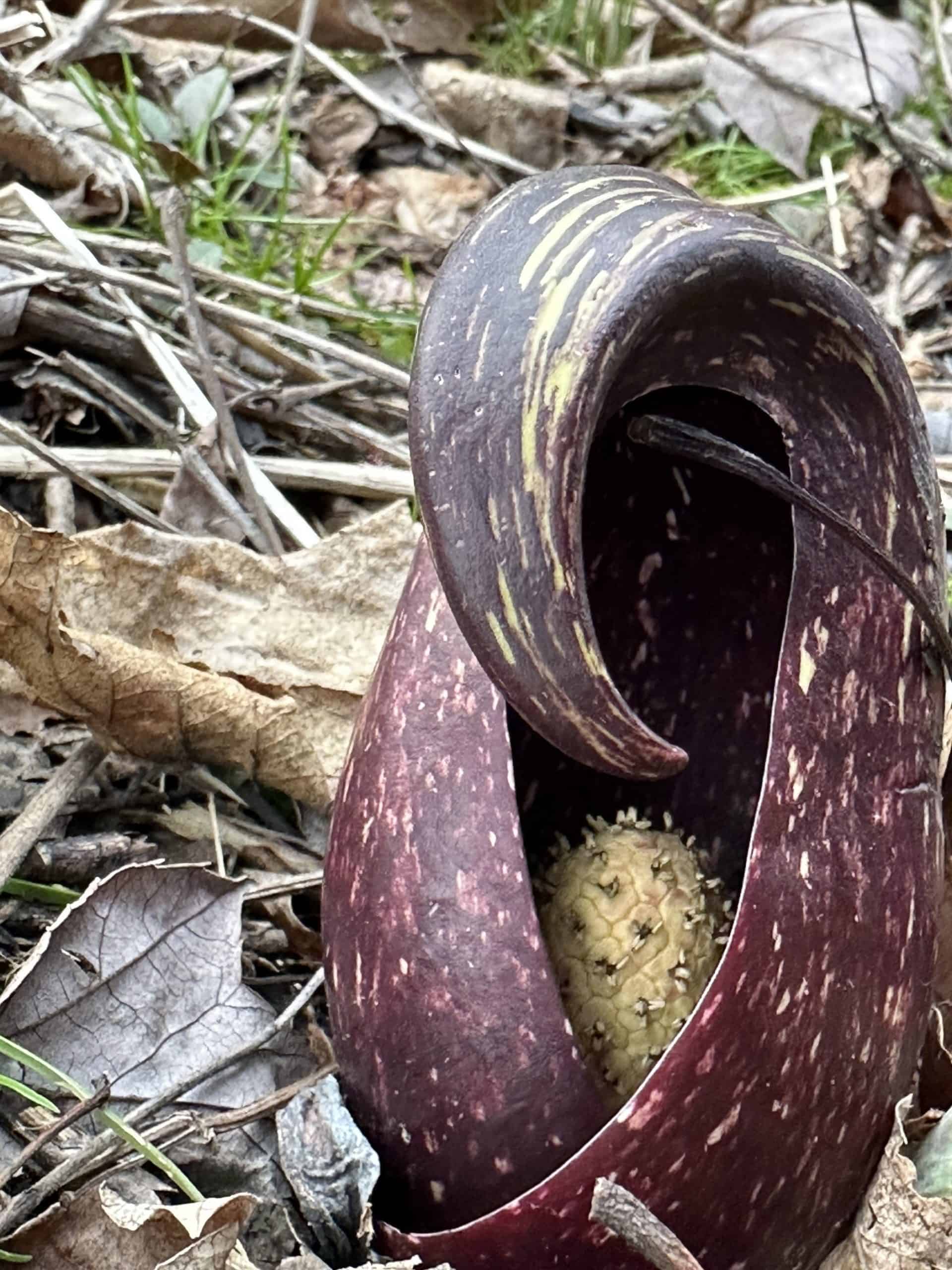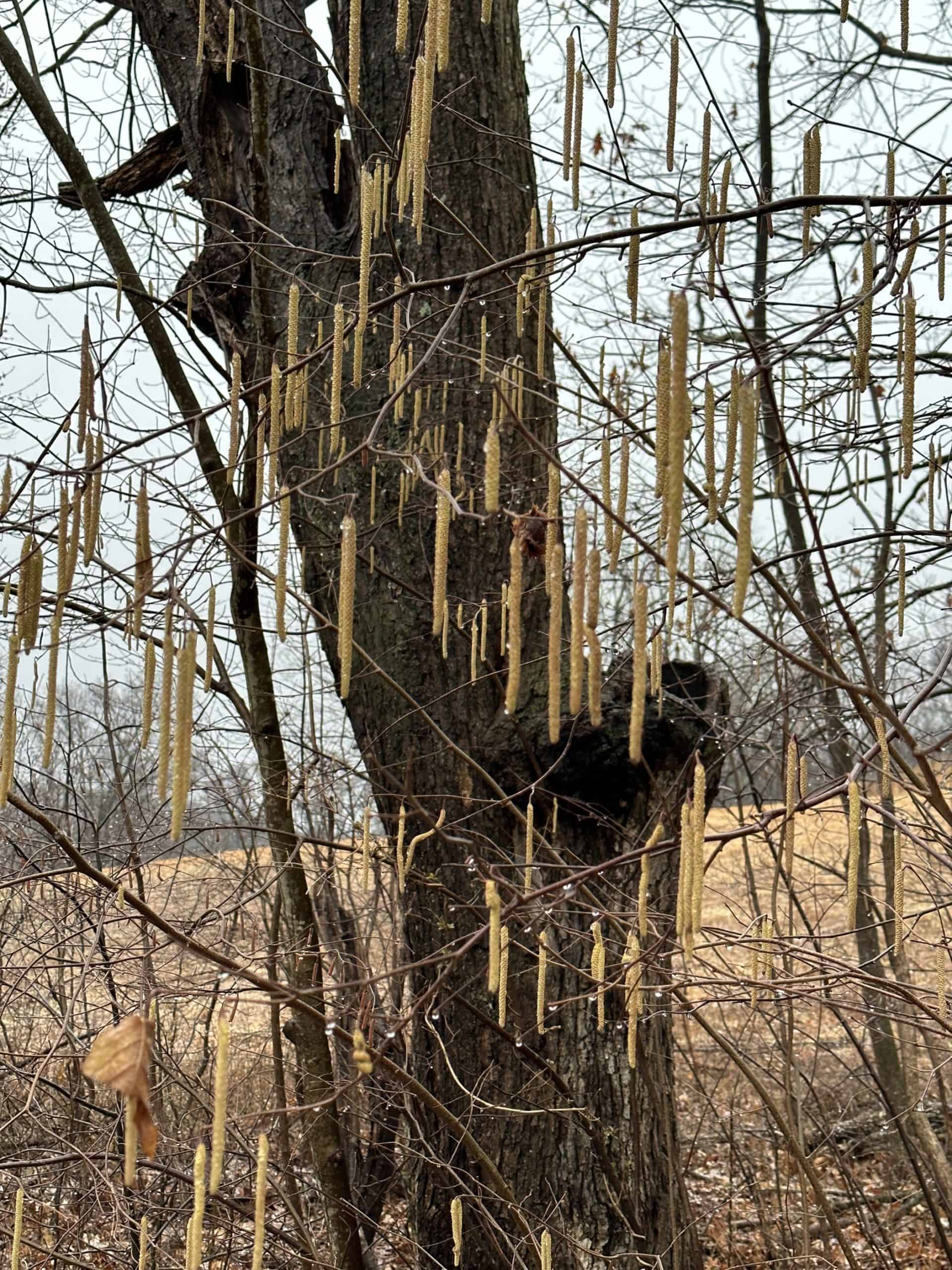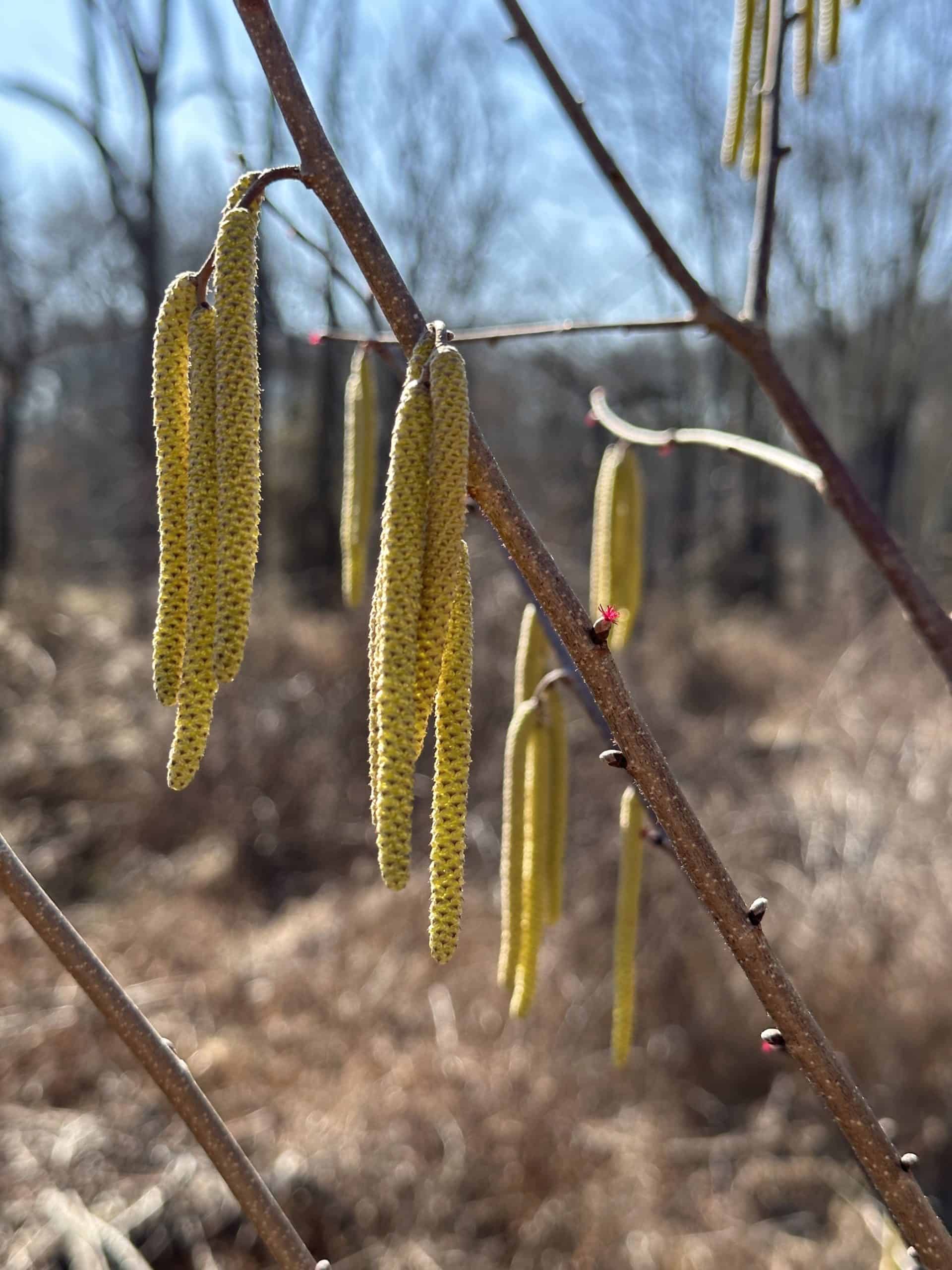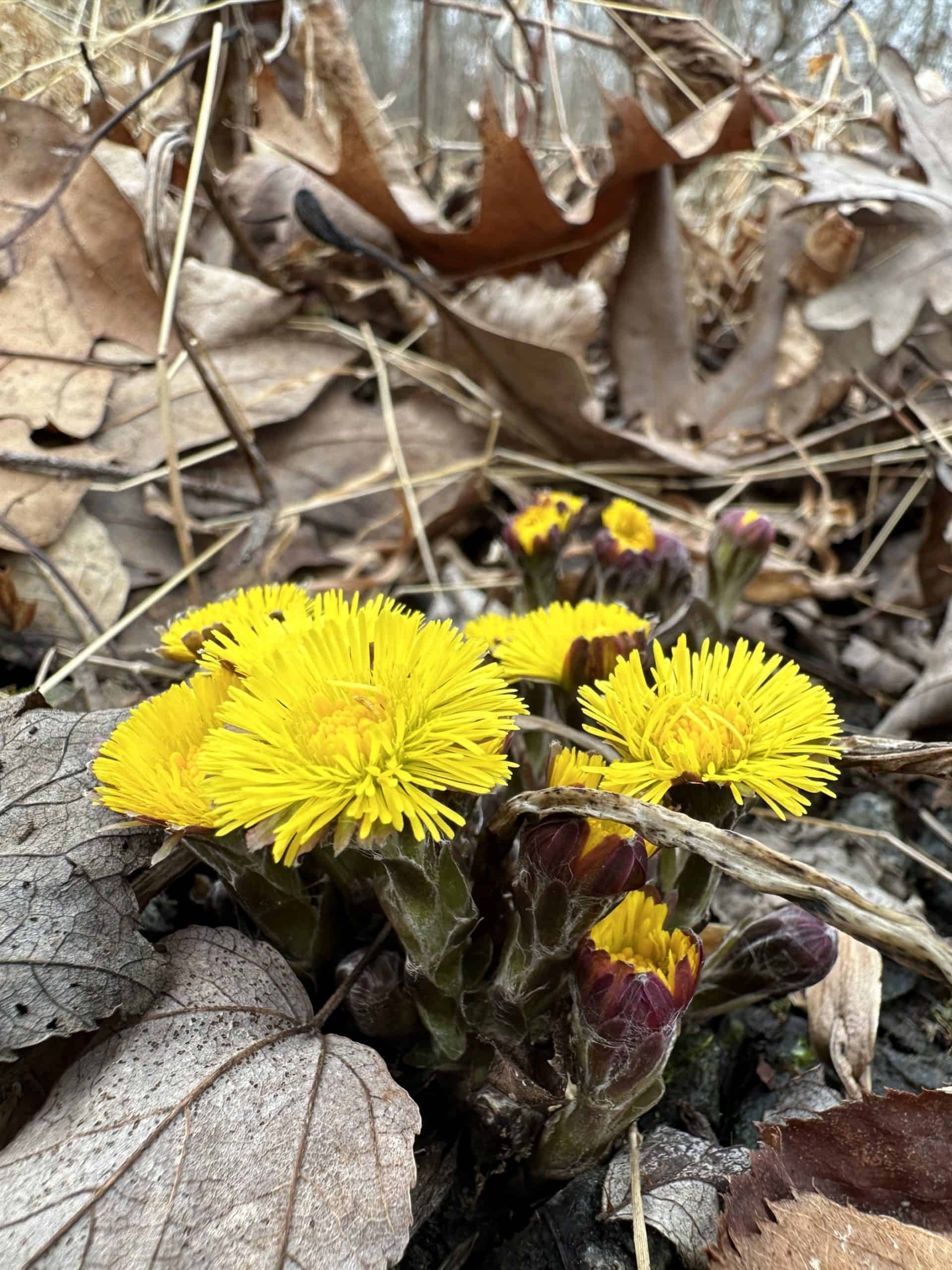Crow’s Nest: What’s blooming now?
By Daniel Barringer, Preserve Manager.
It’s early in the year but spring is upon us. The landscape is still muted in color but there are signs that the season is changing. It may seem like we’re in a perpetual mud season, but that won’t last, and while it does we recommend wearing wellingtons or other waterproof footwear.

Photo: Daniel Barringer
In our wettest areas you’ll see skunk cabbage (Symplocarpus foetidus) flowers poking up, looking like nothing else you’ll see around here. I love this plant for these flowers, a harbinger of spring, as well as the lush foliage we’ll enjoy all summer. And yes, I am among the few who don’t mind the sharp smell the flowers emit if disturbed. The yellowish-green part inside the hood is the spadix on which the flowers are located; if you look observe them for a while you may see they are pollinated by flies.

Photo: Daniel Barringer
A showy sign of spring is the male flowers, or catkins, of smoother alder (Albus serrulata). As these open they release the pollen into the wind and it will reach the female flowers. The catkins in the photo above remind me of the candles that float in mid-air at Hogwarts.

Photo: Daniel Barringer
Most recently blooming in the sunshine yesterday: coltsfoot (Tussilago farfara), below, is native to Europe and western and central Asia. It’s in the Aster family so it has a disk of ray flowers like a dandelion, but the leaves which emerge after the flowers are completely different and the flowers are not on long stalks. These will bloom early and be finished whereas dandelions can bloom in almost any month of the year and are most common in late spring and summer. Though not native, we haven’t found coltsfoot to be spreading and think it is probably not invasive here. You can see it along Trythall Road as you begin to pass the preserve if arriving from Route 23, or if you walk our Warwick Woods section of the preserve you’ll see clumps here and there.

Photo: Daniel Barringer
You can reach the Warwick Woods section of the preserve by hiking there from the visitor center—but that’s more than a mile away by trail. To get closer to it you can also park on the east side of Trythall Road where the Horse-Shoe Trail crosses it. Carefully cross the road and take the Horse-Shoe Trail west into Warwick Woods. Another great seasonal reason to do this is that wood frogs (Rana sylvatica) have just started calling from the wetlands along either side of this trail, a former railroad bed. You may also hear a few tentative peeps of spring peepers (Pseudacris crucifer), depending on how warm is the day.
